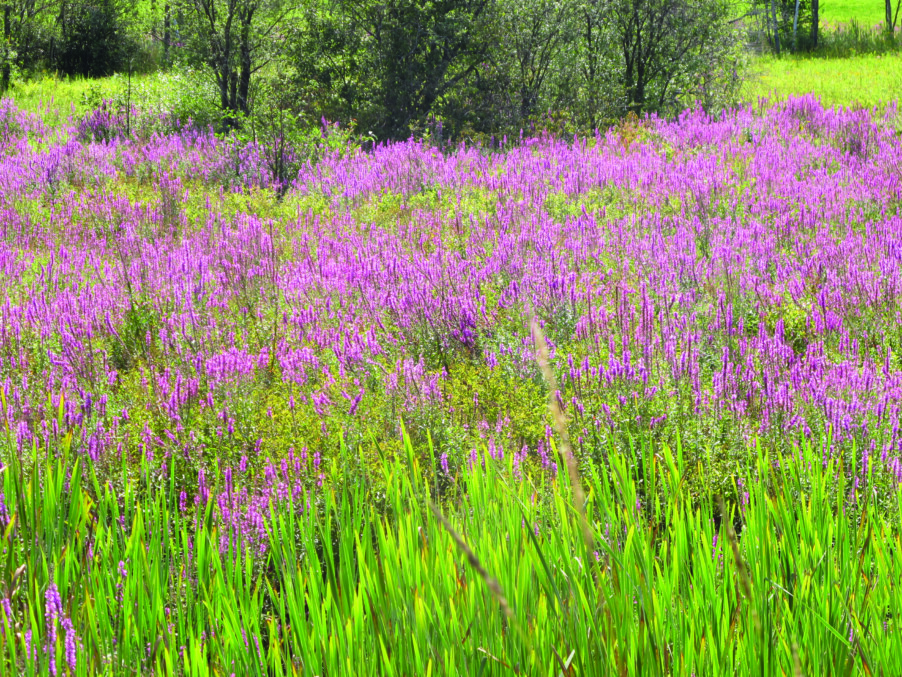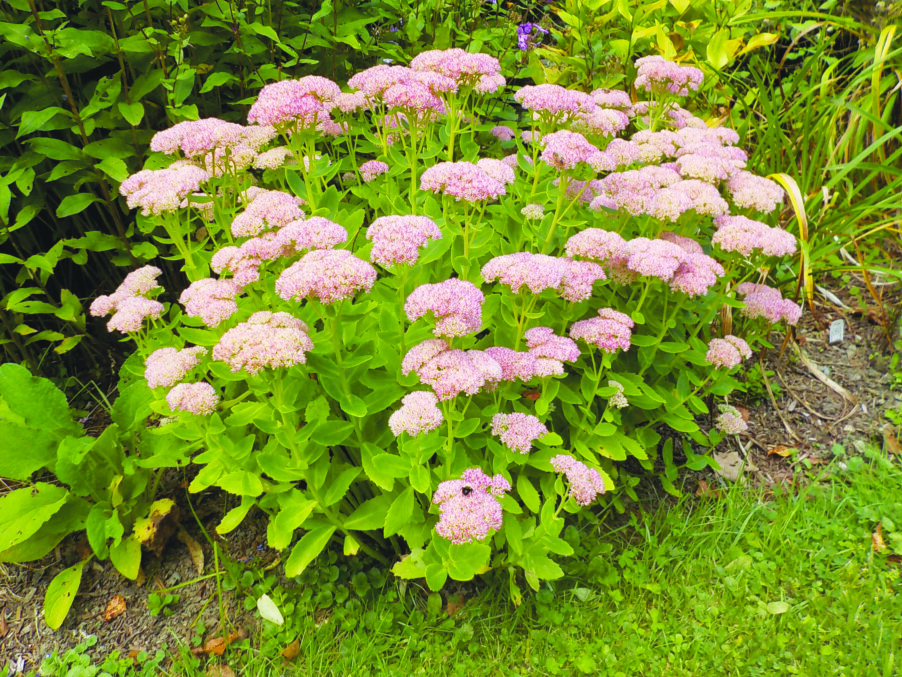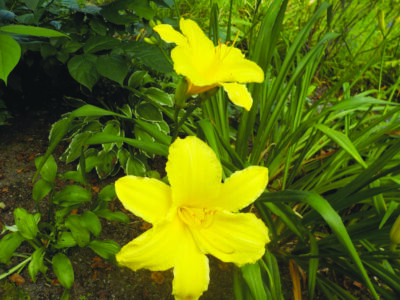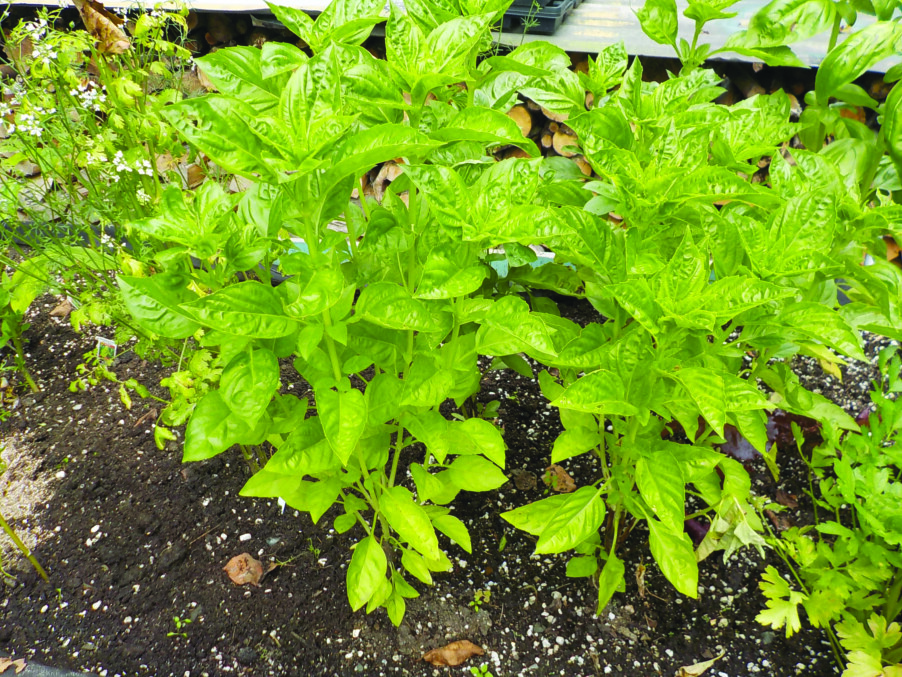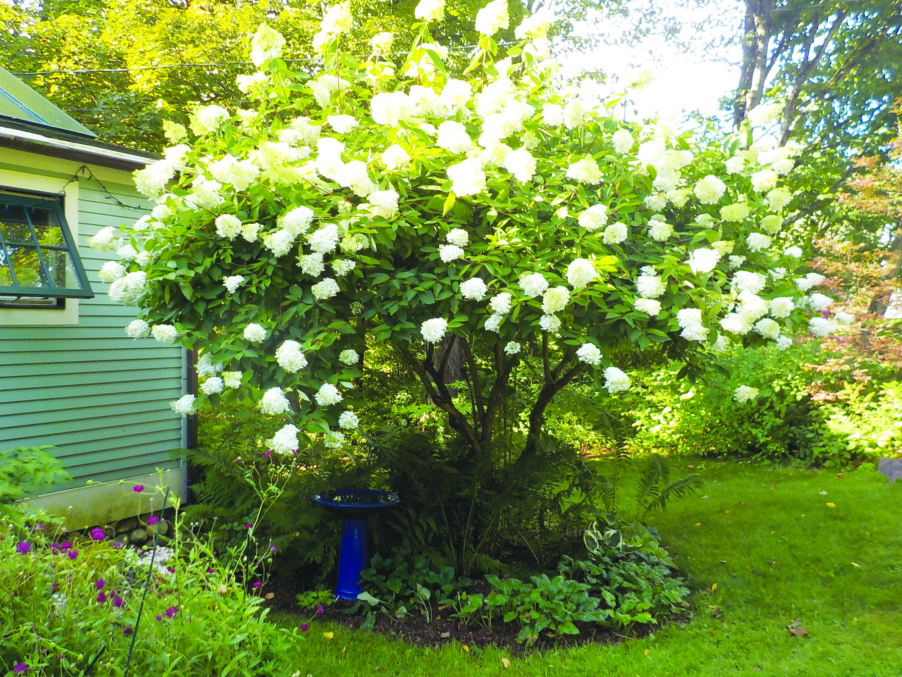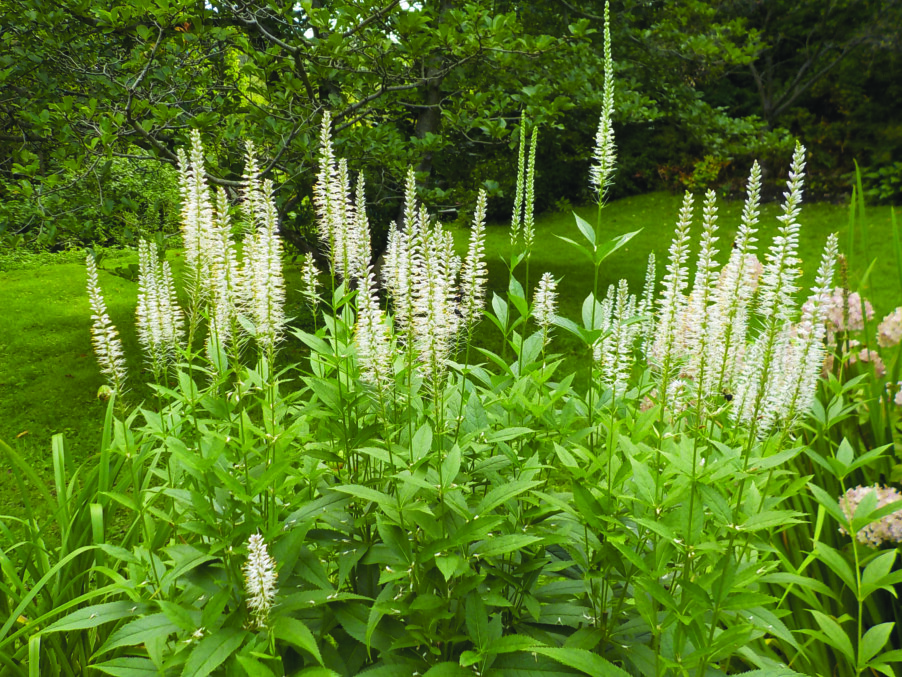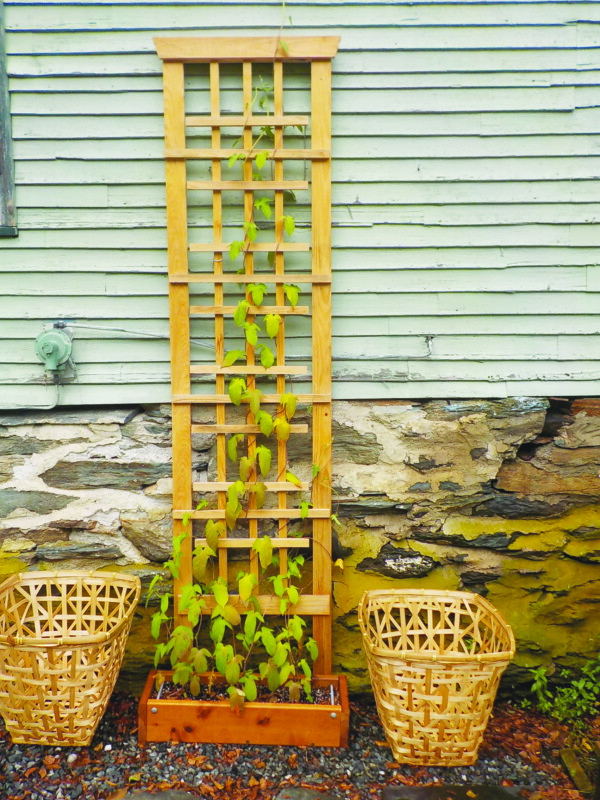See a culprit, dig it out
I’m lucky. Unlike many houses built in the 1800s or early 1900s, mine had no invasive plants when I bought it in 1970, probably because it was built as a creamery, or butter factory. Decorative plants were not needed. Most older houses are plagued with plants brought from Asia or Europe by well-meaning people who did not know that, once imported, those handsome plants might not have any predators that could keep them under control. Most of our native insects will not eat foreign plants.
Plants including Japanese knotweed, Asian bittersweet, goutweed, purple loosestrife, yellow pond iris and multiflora roses have thrived in New England, and all are nearly impossible to get rid of, once established. Unfortunately, I now have four of the six mentioned above. But no Japanese knotweed or bittersweet, thankfully (they are two of the worst).
Plants including Japanese knotweed, Asian bittersweet, goutweed, purple loosestrife, yellow pond iris and multiflora roses have thrived in New England, and all are nearly impossible to get rid of, once established. Unfortunately, I now have four of the six mentioned above. But no Japanese knotweed or bittersweet, thankfully (they are two of the worst).
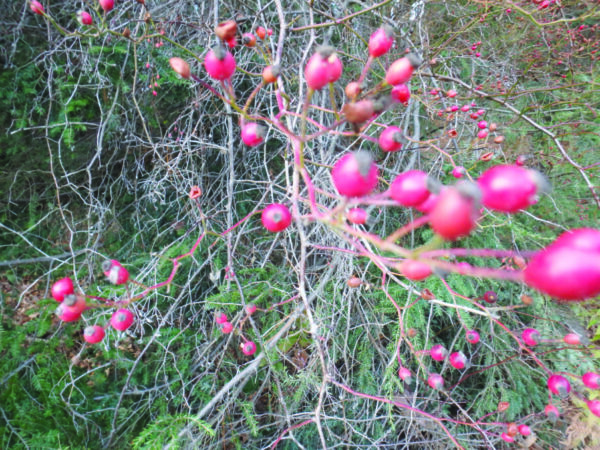
The multiflora rose was introduced from Asia in the 1860s as a vigorous ornamental rose and as a source of rootstock for grafted roses. In the 1930s it was widely introduced as erosion control and alongside highways — a mature planting is so dense it can prevent cars from going over median strips. But the birds liked the rose hips — the seed pods — and it escaped cultivation.
So what am I doing to eliminate it on my property? I am digging it out. Most effective for one- or two-year-old plants, I am using a curved, single-tine hand tool called the CobraHead (www.cobrahead.com) to carefully excavate the roots until I can lift the plant out.
First, I dress appropriately: jeans, long-sleeved shirt, a hat with a brim, and heavy winter leather work gloves. This culprit wants to hurt anyone trying to uproot it. I cut off the branches, just leaving a foot or so to grab onto when pulling it out. Then I loosen the soil and pull weeds around it. The roots radiate outward from the stem like spokes on a bike. I loosen each root and tug gently when they are small enough to remove.
First, I dress appropriately: jeans, long-sleeved shirt, a hat with a brim, and heavy winter leather work gloves. This culprit wants to hurt anyone trying to uproot it. I cut off the branches, just leaving a foot or so to grab onto when pulling it out. Then I loosen the soil and pull weeds around it. The roots radiate outward from the stem like spokes on a bike. I loosen each root and tug gently when they are small enough to remove.
I’ve read that just cutting back the stems to ground level will stimulate the roots to send up new shoots everywhere, causing a bigger problem. There is no easy answer. Invasive plants are always difficult to remove — usually a scrap of root can generate a new plant or several.
Buckthorn is another invasive that is common along streams and at the edges of fields. As with multiflora rose, cutting it down stimulates the roots to send up new shoots. The best way to eliminate it is to starve the roots: Take a pruning saw and cut through the bark and the green layer of cambium beneath that. Go all the way around the trunk, then repeat 6 inches above the first cut, and repeat. This will not kill the tree until the third year, but this slow death will not stimulate the roots to grow. Best done in winter or fall after leaf drop.
Since buckthorn is often multi-stemmed, it can be difficult to use that method. Do it up high enough that you can get your saw in between the stems. But I’ve done it, and it works.
Purple loosestrife is blooming now in swamps and wet places — it is gorgeous but outcompetes many of our native wetland plants that feed pollinators and other animals. Like many invasives, it produces huge numbers of seeds and these seeds don’t all germinate the next spring — many stay dormant for years. I’ve read that multiflora rose seeds can stay viable up to 20 years — a good reason to clear plants out when young.
My approach to purple loosestrife is to dig out new, young plants. I recognize them by their square stem, the leaf shape and the color of the stem, which is often reddish. But for big established plants I just use a curved harvest knife to slice off the foliage once or more than once each summer. This prevents seed production and reduces plant energy.
As regular readers of this column know, I only use organic techniques in the garden. This means no chemicals including herbicides. From what I have read, most herbicides will not kill the invasives mentioned in this article. They will set them back considerably, depending on the age of the plant and the dose of the chemical. But learning to recognize all the invasives is best. And if one appears on your landscape, get rid of it immediately! And remember, persistence is important.
Henry is a lifetime organic gardener living in Cornish, N.H. He presents at garden clubs and libraries around the region, and is the author of four gardening books. Reach him at henry.homeyer@comcast.net.
Featured photo by Henry Homeyer.

